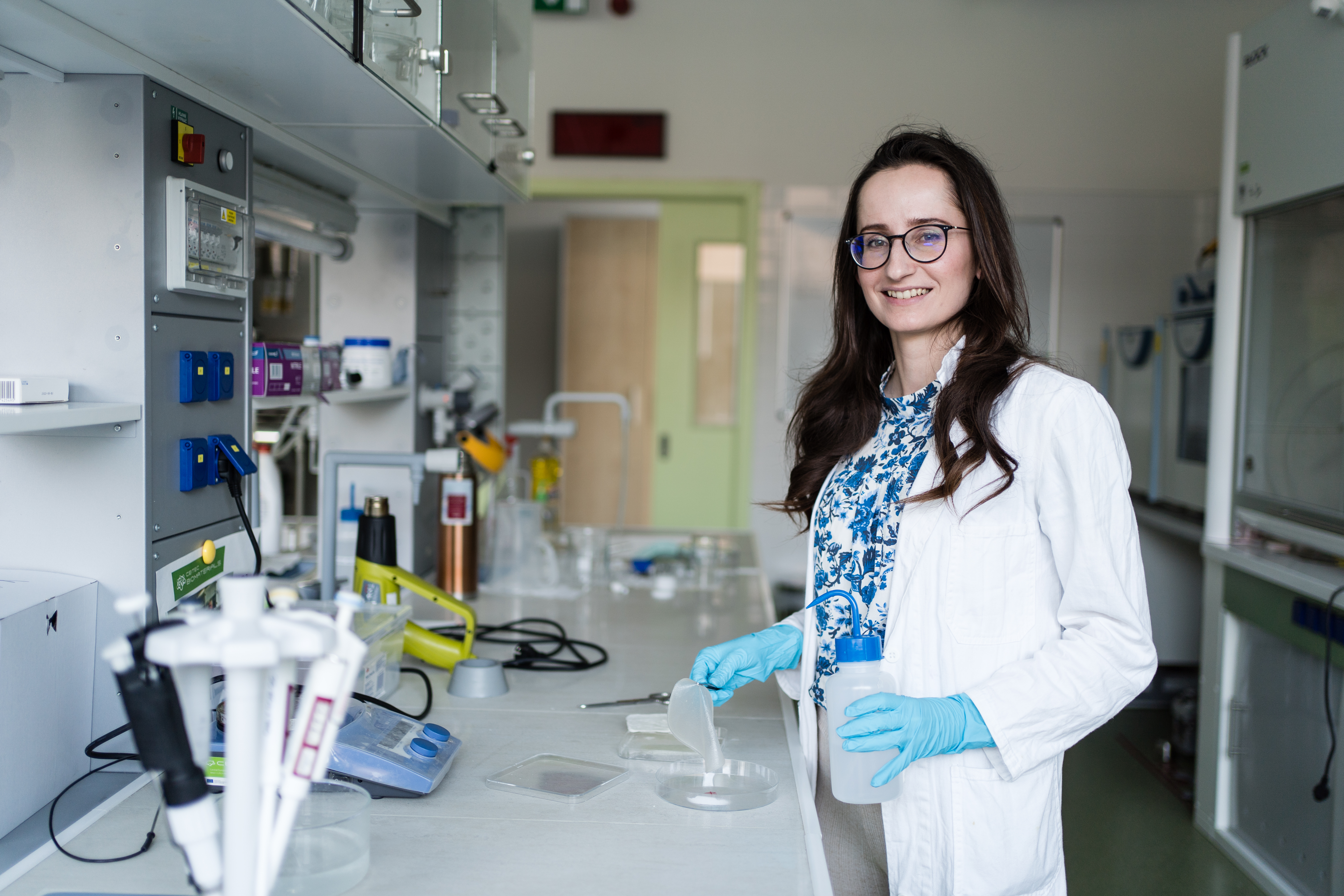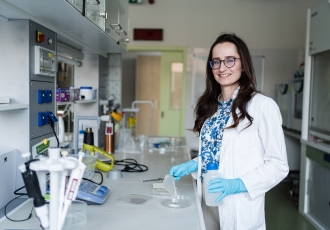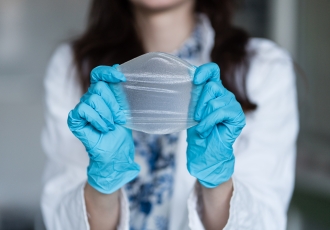18. Mar. 2021
Thanks to modern medicine, severely burned patients have a great chance of survival and a successful return to normal life. The main problem is especially bold and unsightly scars, which can have a cosmetically or functionally unfavourable effect and thus reduce the quality of life after burns. This could be a thing of the past thanks to special patches developed by scientists from CEITEC BUT. The material is made almost exclusively from plants and has the potential to create an ideal environment to support the regeneration process itself in the dermis layer of skin. It can also prevent dangerous infections at a lower cost than currently available solutions.

Katarína Kacvinská, who is involved in the development of the unique material, learned about the topic after years of study: “I studied at the Faculty of Chemistry at BUT, and while on Erasmus in Portugal I first encountered tissue engineering and took an interest in it. After returning to Brno, I heard about Lucy Vojtová and her research, and as part of my diploma thesis I began to deal with the replacement of skin tissue after burns.” The diploma thesis was very demanding for Kacvinská, and after successful completion she decided not to continue her doctoral studies. After a while, however, she began to miss research and today she is a doctoral student at CEITEC BUT. With her research, she even succeeded in the Brno Ph.D. Talent competition last year.
In the laboratories, she is working on the development of a two-layer coating for deep wounds, i.e. a kind of patch that can provide cells with ideal conditions for healing and the formation of new skin. “From the available information, it turned out that the biggest problem for the body, which heals after burns, is inflammation and insufficient humidity of the place being treated. At the same time, cells need a clean environment to work. I missed the top layer that would be covering, keeping moisture on the wound and was antibacterial. At the same time, however, oxygen must come to the wound through this layer,” explains the student, summing up part of her goals. She therefore created two materials with different effects. “The bottom layer is made of collagen, which can be absorbed and supports the regeneration of the missing dermis. The top layer is made of a special antibacterial hydrogel that moistens the wound, does not let impurities through and cleans the wound. As the skin grows, only the top layer would change from time to time.”
With the current treatment of burns, where the wound overlaps, sometimes when changing the cover, the already grown skin tissue may be torn off and healing may be slowed down. This is not just about mild superficial burns. “If you burn your skin only slightly, a thin layer of epidermis is damaged, which can heal in time. As soon as the wound goes deep, i.e. into the dermis, for example, the body reacts during healing by pulling the skin over the wound, but because the deeper part of the skin is missing, a scar is formed. Our goal is to be able to let the deeper layers of the skin grow and thus prevent scars," explains Lucy Vojtová, who has been working on advanced biomaterials for medicine at CEITEC for a long time.
The bottom layer of this patch should help to grow deeper layers. Its material serves the cells as a kind of scaffolding, which they use to complete the missing tissue. If the cells detect that intact skin is present in the area, they will automatically begin to form it also from the provided absorbable material. The hydrogel-based upper material, similar to a blister patch, is changed during treatment and peels off after healing. In addition, it does not visually disturb even during treatment, because it has the same colour and texture as human skin in a thin layer.
Experts work almost exclusively with natural materials, which, according to Lucy Vojtová, are not automatically better than synthetically produced ones, but have a number of indisputable advantages: “These are most often substances obtained from plants. Natural materials often have antibacterial properties in their own right, we must always supply these materials with these abilities. Some plants are anti-fungal, some can self-heal very well. Natural materials are renewable, so if we need a large amount, it comes out relatively cheaply. This is very important for the final cost, so that people can afford it, and it has improved the quality of life for patients."
Scientists from CEITEC BUT are working on the development of unique patches, among other things, with doctors from the Clinic of burns and reconstructive surgery University Hospital Brno.
Source: Události
(translated by Katerina Vlkova, edited by Craig Binding)


 Share
Share

